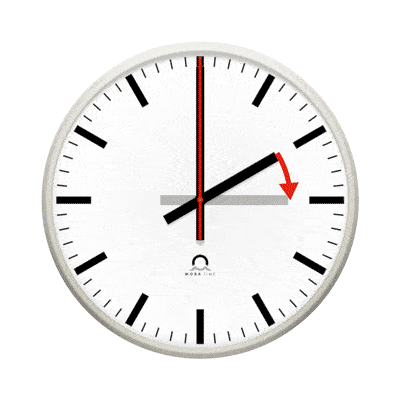Daylight Saving Time (DST) is the practice of setting the clocks forward one hour from standard time during the summer months, and back again in the fall, in order to make better use of natural daylight.
“Spring forward, fall back” is one of the little sayings used to remember which way to set your clock. You set your clock forward one hour in the spring when DST starts (= lose 1 hour), and back one hour when DST ends in the fall (= regain 1 hour). The time changeover is not uniformly regulated internationally. The next time adjustment will take place on March 13th in American and Latin American countriesand on March 27th in European countries.
If you have clocks, which are located throughout your building and are mounted in hard-to-reach areas, this biannual event could add significant maintenance costs. Thanks to our precise and reliable clock systems, this task is eliminated. Our master clocks or time servers, which are synchronized by GNSS systems, take over this task for you and automatically change the time of your clocks and IT networks.
If you are interested in a trouble-free and maintenance-free time keeping to increase your productivity and reduce costs at the same time, we have competent solutions available for you.
Why use DST at all?
Less than 40% of the countries in the world use DST. Some countries use it to make better use of the natural daylight in the evenings. The difference in light is most noticeable in the areas at a certain distance from Earth’s equator.
Some studies show that DST could lead to fewer road accidents and injuries by supplying more daylight during the hours more people use the roads. Other studies claim that people’s health might suffer due to DST changes.
DST is also used to reduce the amount of energy needed for artificial lighting during the evening hours. However, many studies disagree about DST’s energy savings, and while some studies show a positive outcome, others do not.
Source: timeanddate & uhrzeit.org
